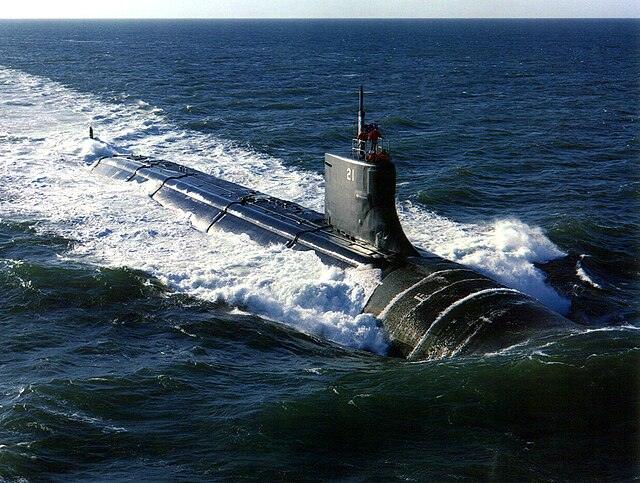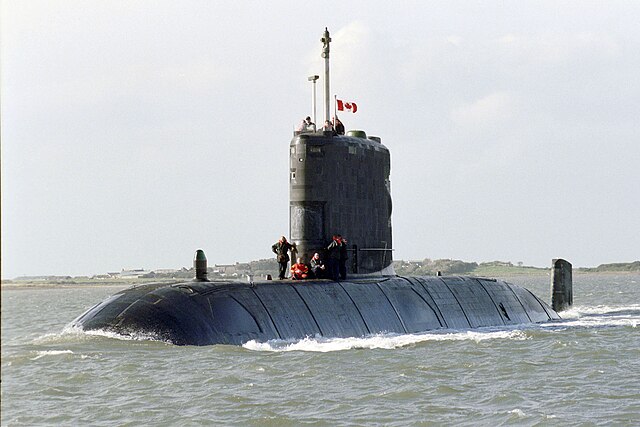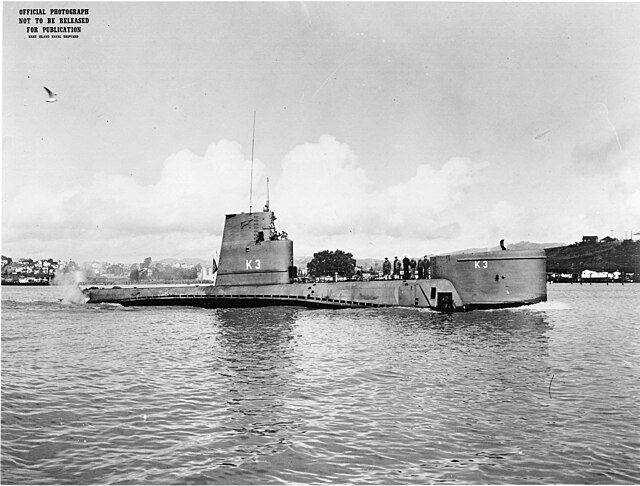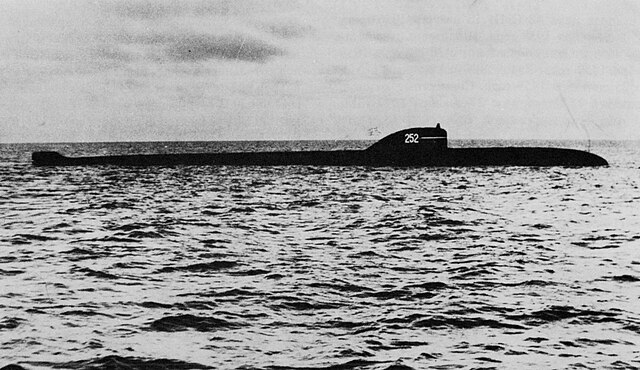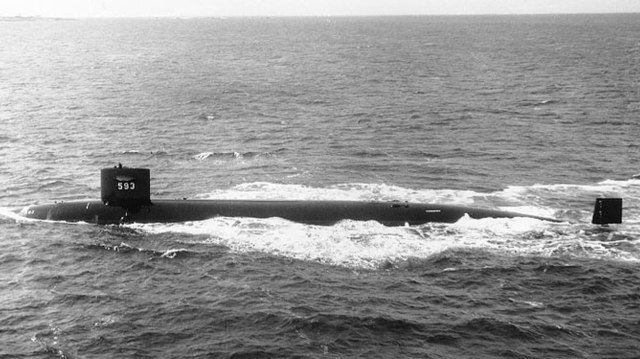The Seawolf class is a class of nuclear-powered, fast attack submarines (SSN) in service with the United States Navy. The class was the intended successor to the Los Angeles class, and design work began in 1983. A fleet of 29 submarines was to be built over a ten-year period, but that was reduced to 12 submarines. The end of the Cold War and budget constraints led to the cancellation of any further additions to the fleet in 1995, leaving the Seawolf class limited to just three boats. This, in turn, led to the design of the smaller Virginia class. The Seawolf class cost about $3 billion per unit, making it the most expensive United States Navy fast attack submarine and second most expensive submarine ever, after the French Triomphant-class nuclear-powered ballistic missile submarines.
Seawolf-class submarine
An attack submarine or hunter-killer submarine is a submarine specifically designed for the purpose of attacking and sinking other submarines, surface combatants and merchant vessels. In the Soviet and Russian navies they were and are called "multi-purpose submarines". They are also used to protect friendly surface combatants and missile submarines. Some attack subs are also armed with cruise missiles, increasing the scope of their potential missions to include land targets.
HMCS Windsor, an attack submarine of the Royal Canadian Navy
USS K-3 with BQR-4 sonar dome
K-5, a Soviet November-class SSN, the threat that made Western conventional SSKs obsolete
USS Thresher, the first high-speed deep-diving SSN optimized for both ASW and surface attack

